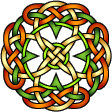|
The progenitor of this great
Scottish family is claimed as Bartolf, a nobleman
who came to Scotland in 1067 in the retinue of
Edgar the Aetheling, brother of Margaret, later
queen of Malcolm III. Malcolm appointed him
governor of Edinburgh Castle and bestowed on him
estates in Fife, Angus, the Mearns and
Aberdeenshire. Bartolf'
s son, Malcolm, was
created constable of the royal castle at
Inverury, which he held for David II. His
great-grandson, Sir Norman Lesley, acquired the
lands of Fythkill in Fife, afterwards called
Lesley, around 1282. George Lesley was created a
Lord of Parliament in 1445 as Lord Lesley of
Leven, and had all his lands united into the
barony of Ballinbreich. He was advanced to the
title of Earl of Rothes sometime prior to 1458.
George, the 4th Earl, died in mysterious
circumstances at Dieppe, along with the Earl of
Cassillis and two others, returning from the
wedding of Mary, Queen of Scots to the Dauphin in
1558.
Thereafter, the Lesleys
abandoned politics for a time, for the less
hazardous career of professional soldiery.
Lesleys fought in Germany, France, Sweden and the
Baltic. Perhaps the most famous of the Lesley
mercenaries was Alexander Leslie, who was
recalled from the Continent to take command of
the Army of the Covenant, and was later raised to
the peerage as the Earl of Leven. David Lesley,
of the Rothes family, was also a Covenanter
commander. He was routed by Cromwell'
s
troops at Dunbar in 1650 and imprisoned in the
Tower of London until the Restoration in 1660,
being created Lord Newark in the following year.
The 7th Earl of Rothes was created a duke in 1680
by Charles II. He was a great favourite of the
king and one of the most distinguished statesmen
of his time. He was made a Lord of Session and
President of the Council. The dukedom died with
him as he left no male heir, but under the terms
of an earlier charter, the earldom could pass
through the female line, and thus the title was
preserved.
The 9th Earl was Vice Admiral
of Scotland and governor of Stirling Castle. He
was a supporter of the Hanoverians, and in 1715
he commanded a regiment of cavalry at the Battle
of Sheriffmuir. He sold much of the Rothes
estates, although the magnificent Leslie House
near Fife remained the seat of the earls until
1926. Leslie Castle in Aberdeenshire has also
been fully restored in recent years by David
Lesley, a prominent local architect. The use of
the name (male - Leslie, female - Lesley) as a
forename is of fairly recent origin. |



